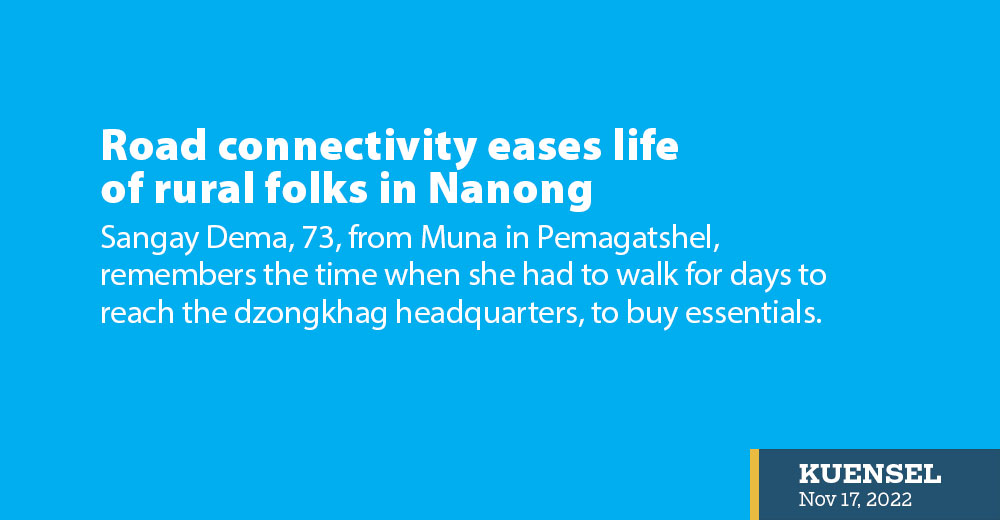Neten Dorji | Dalung
Sangay Dema, 73, from Muna in Pemagatshel, remembers the time when she had to walk for days to reach the dzongkhag headquarters, to buy essentials.
The villagers then rarely ventured out because walking through forests and difficult terrain was risky.
“There weren’t much communication facilities like now we have. There were no other prospects besides rearing animals and eating what we could grow in our fields,” she said.
Today, Sangay Dema travel is easy with roads and vehicles. Almost all the villages in Nanong and Lumang are connected with roads.
“I remember carrying heavy loads on my back and walking all the way to Pemagatshel and Wamrong to sell them. We would come back home with essentials such as rice, oil and salt,” said 70-year-old Thinley Wangdi, a villager.
He said that roads have benefited the residents of rural areas like Tshatsi, Muna, Dalung and other villages in the dzongkhag.
It has been more than three years since a road connected the villages of Lumang gewog.
Ompo, 72, said that road connectivity has made life so much easier for the people of a dozen remote villages of Nanong.
Road has brought businesses to the villages.
Pema Gyeltshen from Dalung said that after the road came to Lumang, it became easier for the farmers to transport vegetables to the nearby markets.


